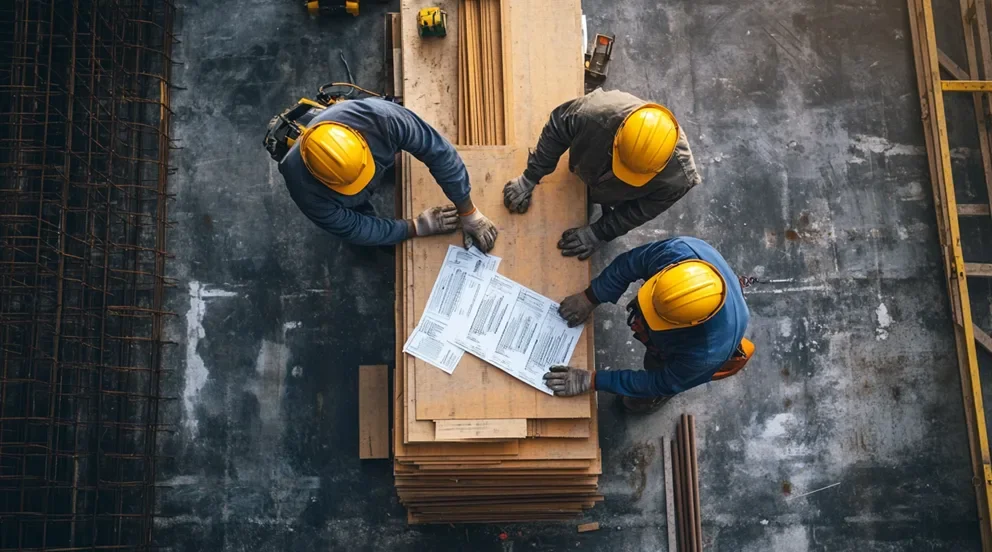The term roofing application refers to the method or process by which roofing materials are applied or installed on buildings. It encompasses an assortment of techniques specific to the types of roofing material used, such as shingles, tiles, metal panels, or bituminous membranes. The effectiveness and lifespan of a roof are largely determined by the proficiency with which its application is performed.
Professionals in the field evaluate a multitude of factors to determine the most suitable roofing application for a structure. Considerations include climate suitability, building design, weight sustainability, and budget. Experts classify methodologies broadly into steep-slope or low-slope applications, which pertain to the roof pitch — a key determinant in selecting materials and installation protocols.
Finally, advancements in technologies and materials science have expanded roofing application methods, tailoring them to enhance durability, energy efficiency, and aesthetic appeal. These evolutions are not only pertinent to new constructions but also to repairs, retrofitting, or upgrading existing roofing systems. Hence, a quality roofing application is crucial for safeguarding from environmental elements and ensuring roof longevity.
Content:
- Solar Shingles Shake-Up: How New Tech is Merging Roofing with Renewable Energy
- The Rise of the Living Roof: Can Eco-Friendly Green Roofs Transform Urban Spaces?
- Smart Roofs: The Next Frontier in Home Automation and Environmental Monitoring
- Material Evolution: The Emergence of Self-Healing and Air Purifying Roofing Solutions
- 3D Printing Goes Overhead: The Impact of Additive Manufacturing on Roof Design and Construction
Embarking on a roofing project compels a grasp of the fine line separating longevity and hastily-necessitated repairs. The arcane art of roofing application finds homeowners and contractors alike navigating through a labyrinthine array of options, inundated by not just materials, but the nuanced methodologies sustaining the covers over their heads. This exercise climbs beyond mere shelter; it beckons equal measures of craft and scientific astuteness.
At the very eave of decision-making rest the elemental queries propounded by budget constraints, climatic antagonisms, and architectural contours. Wrestling with such variables obligates guidance oriented not to lead one astray among the bewildering branched paths of installation and sustenance. Properly approached, a roofing application evolves from a mere task into the symphonic marriage of form, function, and foresight — orchestrating the pillars of protection and appeal.
A journey down the realm of enhanced product endurance decorates our substantive exploration. Instruction awaits, intended to furnish both neophytes and antiquated experts with innovative axioms of applying a roof with vigor and astucity. Initiating this pierce into roofing application riddles, one finds enlightenment bridging practical necessities and avant-garde roof artisanship.
Solar Shingles Shake-Up: How New Tech is Merging Roofing with Renewable Energy
The integration of solar shingles is revolutionizing the roofing industry, making renewable energy accessible to homeowners. Unlike traditional solar panels, these shingles blend seamlessly with your roof, providing a dual purpose of protection and power generation. Their aesthetically pleasing design is changing the landscape of suburban and urban homes, as they are visually indistinguishable from standard roofing materials. With increasing environmental awareness, solar shingles are a step toward a sustainable future.
Innovative technology firms have engineered solar shingles to be lightweight and easy to install. This advancement has drastically reduced the cost and complexity of adopting solar energy for residential use. The shingles are equipped with advanced photovoltaic cells that capture sunlight and convert it into electricity. Installing these shingles can significantly reduce a household’s reliance on the grid, leading to lower energy bills and a smaller carbon footprint.
The durability of solar shingles is another key selling point. These resilient materials can withstand harsh weather conditions, such as hail and heavy rain. Manufacturers offer extensive warranties, often matching the longevity of traditional roofing materials. With durability comes peace of mind, making them an attractive investment for eco-conscious homeowners. Furthermore, the shingles’ ability to harness energy without requiring additional space is a game-changer.
Solar shingle technology is not just about individual savings; it has the potential to transform energy grids. As more homes adopt this technology, communities can become decentralized power stations, contributing surplus electricity back to the grid. This shift could help stabilize energy supply and demand, reducing the strain on existing infrastructure. As policies and incentives align, solar shingles may become the standard in new housing developments.
The proliferation of solar shingles symbolizes a paradigm shift in building practices. Architects and builders are increasingly integrating renewable energy solutions into their designs. As the technology continues to improve, we will likely see further innovation, such as shingles that can store energy or integrate with smart home systems. In the quest for a greener planet, merging roofing with renewable energy is a practical and promising strategy.
The Rise of the Living Roof: Can Eco-Friendly Green Roofs Transform Urban Spaces?
Urban landscapes are being transformed through the adoption of living roofs, which present a unique blend of aesthetic beauty and ecological function. Often referred to as green roofs, these spaces are created by cultivating vegetation atop buildings. They serve as natural insulators, reducing the need for heating and cooling, and provide residents with a touch of greenery in concrete jungles. The implications for energy savings and biodiversity are significant.
The concept of a living roof is not new, but its implementation in modern architecture has seen a resurgence. These structures are capable of supporting a range of plant life, from grasses to full-fledged gardens. The benefits are manifold; green roofs can mitigate the urban heat island effect, where cities experience elevated temperatures due to concrete and asphalt absorption of sunlight. This natural layer of insulation can lead to a cooler urban environment.
Moreover, living roofs offer a habitat for urban wildlife, such as birds and pollinators, contributing to increased biodiversity. They also help manage stormwater runoff, acting as a sponge that absorbs rainwater and releases it slowly, preventing overburdened sewer systems from flooding. Such ecological services are particularly valuable in densely packed cities where green space is limited and environmental impact is a concern.
The implementation of living roofs could redefine urban planning. By reclaiming unused rooftop spaces, cities can expand green spaces without the need for additional land. These roofs can become communal areas, promoting human well-being and community interaction. The vision is an interconnected network of rooftop gardens and parks, fostering social ties and environmental stewardship.
To fully realize the transformative potential of living roofs, there must be supportive policies and incentives from local governments. Urban planners and developers must prioritize sustainability in their designs. The collaboration between city planners, architects, and environmentalists is key in creating a blueprint for a greener urban future. With concerted effort, living roofs could indeed be a cornerstone in the transformation of urban spaces into more livable and eco-friendly environments.
Smart Roofs: The Next Frontier in Home Automation and Environmental Monitoring
Smart roofs are poised to become a critical component in the evolving landscape of home automation. By integrating sensors and internet connectivity, these innovative roofing systems offer homeowners unprecedented control over their living environments. They can monitor weather conditions, manage energy consumption, and even alert residents to necessary maintenance. As smart technology advances, so too does the potential for roofing to become an interactive part of the smart home ecosystem.
These intelligent roofing solutions can provide real-time data on temperature, humidity, and sunlight exposure. Homeowners can use this information to optimize their HVAC systems, leading to increased energy efficiency and comfort. For example, by understanding when the roof absorbs the most heat, smart thermostats can adjust indoor temperatures proactively. This level of environmental monitoring represents a significant leap forward in home management and sustainability.
Furthermore, smart roofs can be equipped with materials that react to environmental changes. These could include photovoltaic panels that adjust to sunlight angles for optimal energy generation or materials that respond to temperature fluctuations to maintain consistent indoor conditions. Integrating these responsive materials with smart home systems allows for a self-regulating living space that minimizes energy waste and maximizes comfort.
The advent of smart roofs also offers potential for enhanced safety and longevity of roofing structures. Sensors embedded within the roofing material can detect early signs of wear and tear, moisture infiltration, or structural weakness caused by extreme weather. Homeowners and maintenance crews can address issues before they escalate into costly repairs. This kind of predictive maintenance is set to become the standard, ensuring the longevity of the roof and the safety of the inhabitants below.
As smart roof technology advances, it is not hard to envision a future where roofs do more than protect against the elements; they will become active players in the smart home, responding to weather patterns and integrating seamlessly with other home automation systems. The adoption of smart roofs will depend on the ability of the industry to educate consumers about the benefits and to offer cost-effective solutions. It’s an exciting time for roofing technology, with the promise of smarter, more efficient homes on the horizon.
Material Evolution: The Emergence of Self-Healing and Air Purifying Roofing Solutions
The evolution of roofing materials has reached an innovative frontier with the emergence of self-healing and air-purifying solutions. Scientists and manufacturers are developing materials that can repair minor damage autonomously and break down pollutants, thereby contributing to a building’s structural integrity and the surrounding air quality. These advancements signify a new chapter in material science, with potential implications for sustainability and urban health.
Self-healing roofing technologies are inspired by biological systems, such as the human skin’s ability to repair cuts and wounds. Microcapsules containing healing agents can be embedded within roofing materials. When damage occurs, the capsules rupture and release the agents, which react with the material to seal cracks and gaps. This process can significantly extend a roof’s lifespan, reducing the need for frequent repairs and associated environmental impact.
Air purifying roofing materials utilize photocatalytic compounds that react with sunlight to neutralize pollutants. When ultraviolet rays hit the roof, the compounds convert harmful substances like nitrogen oxides into less harmful substances. This technology not only helps purify the air but also keeps the roof cleaner, as the reaction breaks down organic matter which can lead to stains and deterioration over time.
The incorporation of such innovative materials into construction practices can fundamentally alter the role of roofing. Roofs could serve as a first line of defense against environmental damage, both protecting the interior of a building and mitigating the external impact of pollution. This dual-functionality is especially critical in urban areas, where environmental concerns are most acute. Buildings could become agents of air purification, contributing to cleaner cityscapes.
For these materials to become widespread, the construction industry must navigate challenges such as cost and public awareness. While initial investments may be higher, the long-term savings from reduced maintenance and positive environmental outcomes provide a compelling argument. As building codes evolve to emphasize sustainability, self-healing and air-purifying roofing solutions may well become standard practice.
The adoption of these forward-thinking materials reflects a growing recognition of the built environment’s role in global sustainability efforts. As we push the boundaries of what construction materials can do, buildings themselves become active participants in environmental stewardship. The emergence of self-healing and air-purifying roofing solutions underscores our commitment to a more resilient and health-conscious future.
3D Printing Goes Overhead: The Impact of Additive Manufacturing on Roof Design and Construction
3D printing is soaring to new heights in the field of construction, and its impact on roof design and construction is poised to revolutionize the industry. Additive manufacturing enables the creation of complex, customized roofing structures that were previously impossible or prohibitively expensive to produce. This technology has the potential to streamline construction processes, reduce waste, and open up new possibilities in architectural creativity.
The precision and versatility of 3D printing permit architects to design roofs with intricate patterns and geometries. Such freedom enables bespoke solutions tailored to specific climate conditions or aesthetic preferences. This level of customization was once impractical but is now attainable with additive manufacturing.
Environmental sustainability is another advantage of 3D-printed roofing. The process creates structures using only the necessary amount of material, reducing waste and resource consumption. Moreover, using recycled materials in the printing process can further decrease the environmental footprint. As the construction industry grapples with its impact on the planet, 3D printing emerges as a viable path toward more eco-friendly building practices.
One of the most intriguing aspects of 3D printing in construction is the potential for on-site fabrication. This capability not only cuts down on emissions and costs but also allows for real-time alterations based on immediate requirements or last-minute design changes.
To harness the full benefits of 3D printing for roofing, there will need to be shifts in building regulations, workforce skills, and public perception. Education and training will play a critical role in equipping professionals with the knowledge to operate new machinery and implement complex designs.
The advent of 3D printing in roofing is indicative of a broader transformation in construction. With a commitment to adaptation and innovation, the industry can look forward to a future where roofs are not just essential elements of shelter but also showcases of technological prowess, design ingenuity, and environmental responsibility.



